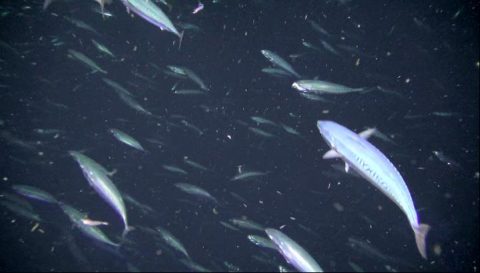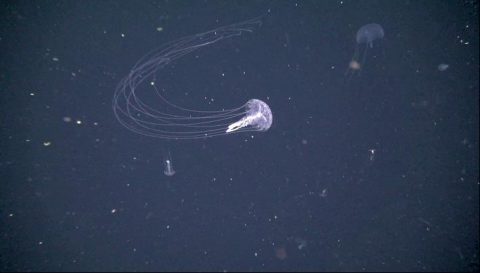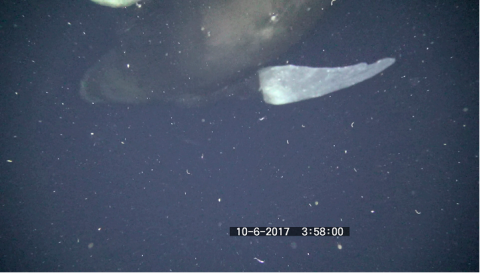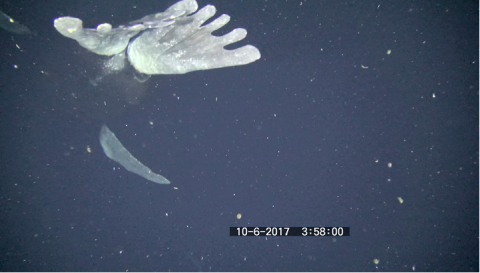A group of three, we’re the zooplankton-and-nekton-people on board. We are interested in how environmental drivers such as oxygen, temperature or light shape the distribution of pelagic animals. “Pelagic” means “in the water column”, so most of these animals hardly see the seafloor or the ocean’s surface, but occupy the three-dimensional space in between. If they are fast enough swimmers to decide where they want to be (independent of the ocean’s currents), we call them nekton. The drifting organisms are called plankton. While the latter can’t swim against currents, many of them perform a daily vertical journey of a few hundred meters: moving up to the surface at night to feed, and down into the dark, cold, and oxygen-poor layer at about 300m depth to hide from their predators. This is the largest synchronized movement of animals on earth both in terms of number of individuals as well as biomass.

To observe these migration patterns (and also the distribution of different groups in relation to water mass characteristics), we use a suite of scientific instruments. One of them is the Hydrobios Multinet, an aluminum frame equipped with five plankton nets that can be opened and closed remotely, allowing the discrete sampling of the zooplankton community at a particular layer. Those nets are then recovered, rinsed and their contents preserved. Analysis in the lab will take place after the cruise using a scanner and image analysis. Because many fragile organisms are destroyed either by the net itself or by the preservative, we use additional camera systems that allow us to observe animals “in situ”, in their natural habitat. These include the Underwater Vision Profiler, a system which captures a profile of black and white still images in a well-defined volume and additionally counts and sizes particles, allowing the semi-automatic sorting of plankton images, see https://planktonid.geomar.de). Another imaging instrument is the pelagic in situ observation system PELAGIOS, which collects HD video of the animals in the water column while being towed at low speed by the ship. We tow PELAGIOS for about 15min-transects at different depths up to 500m.

After four day/night-stations we already start to recognize some first patterns and can tell with high accuracy which critters occupy a particular depth layer. As an example, two key crustaceans in the region are a krill species (Euphausia mucronata) and a squat lobster (Pleuroncodes monodon). While the latter is confined to shallow regions, krill is so far found at every station. Both crustaceans migrate to deeper, oxygen deprived layers during the day, where they seem to just hang out and hold their breath until it is time to move up again. Where they both occur, the krill swims (very slowly) close to the bottom, and the squat lobster settles down on the seafloor (there, it is actually hard to observe it with our systems – we usually don’t want to run them into the ground). In contrast to the patterns observed for the crustaceans, we found that some medusae seem to spend their nights just below the oxycline and move upward during the day – so, they do quite the opposite to the mainstream movement. This illustrates how different the behaviors are those organisms have evolved to survive in the Peruvian upwelling system. Although with our instruments, we mostly collect observations of animals that are rather small, we’ve documented some unexpected visits of fast predators including fish and squid even curious South American sea lions!


Henk-Jan Hoving and Helena Hauss, GEOMAR.